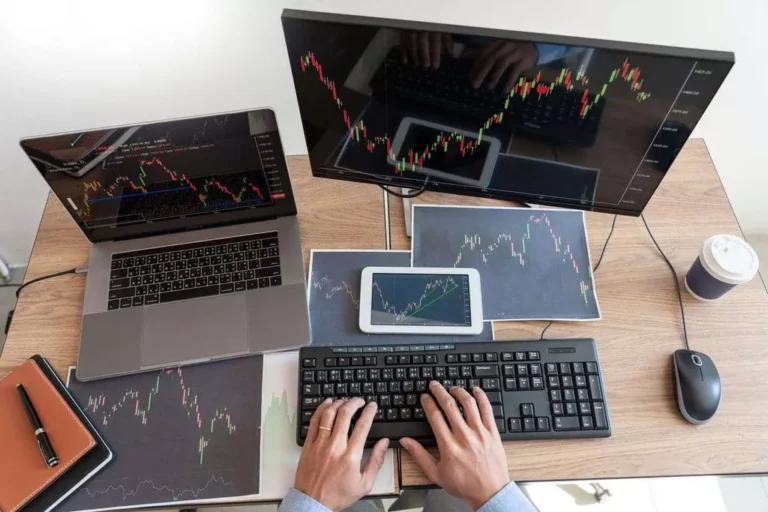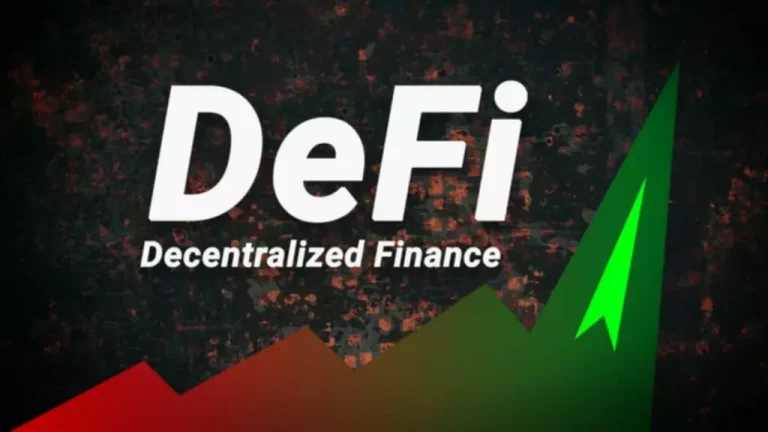This algorithmic method to cost willpower ensures that liquidity swimming pools can perform effectively with out the necessity for traditional order books or direct counterparties. Liquidity pools are a fundamental part of the DeFi ecosystem, offering a secure and decentralized method for traders to swap tokens without relying on a centralized trade. By using Automated Market Making, liquidity swimming pools can decide the price of each token in the pool and facilitate trades between customers. As DeFi continues to grow and evolve, liquidity swimming pools will stay a crucial element of this thrilling new financial ecosystem. Liquidity providers receive incentives like LP tokens and yield farming opportunities, permitting them to earn rewards for offering liquidity to the DeFi ecosystem.

This approach ensures that liquidity pools keep enough liquidity for DeFi protocols to function and presents an incentive for users to contribute to the swimming pools. Liquidity pools are at the heart of AMMs, serving as the basic constructing blocks for decentralized buying and selling. These swimming pools encompass funds contributed by liquidity providers (LPs) who deposit their property into good contracts. The objective of liquidity pools is to facilitate seamless trading by ensuring there’s sufficient liquidity available for various tokens. By taking part in liquidity pools, LPs play an important position in sustaining market efficiency and enabling others to trade in opposition to their assets.
Liquidity Swimming Pools Vs Order Guide Method
Let’s discover how the CPMM algorithm works inside the Uniswap ecosystem. Cryptocurrency and decentralized finance (DeFi) have opened up a world of opportunities for people to generate passive revenue. Among the varied methods obtainable, Automated Market Makers (AMMs) have gained important recognition. Let’s understand this with an example where we’ve 2 liquidity pools, A and B. In a pool teeming with liquidity, individual trades, except exceedingly voluminous, barely make a ripple, resulting in minimal slippage.

AMMs, particularly CFMMs, use specific mathematical formulation to determine the pricing of assets within their systems. Notably, exchanges such as Uniswap, SushiSwap, and Curve usually adhere to the fixed product formula as their primary pricing mechanism. An impermanent loss can happen when trading with an Automated Market Maker. This is because the value of your property can be devalued by the AMM’s simple method that calculates the stability of belongings multiplied by the steadiness of tokens A and B.
First, the attacker buys the token earlier than the sufferer and pumps up the worth. His (or her) aim is to extend the change price on a given token buying and selling pair (i.e.XYZ / ETH). It might result in a scenario by which the worth of the token falls far more than in the case of adequately deep swimming pools of liquidity. When you decide to withdraw from the pool you’ll simply want to choose out ‘Remove Liquidity’ and select the amount you’d prefer to withdraw. Once here you’ll see a few choices in your unbonding period (i.e. the amount of days it takes to take away your tokens from the pool should you determine to withdraw).
Instead, they depend on an ingenious mechanism known as Automated Market Makers (AMMs), which determine prices based mostly on the relative ratio of belongings inside the pool. Several in style DeFi platforms cater to users excited about participating in liquidity swimming pools. Among essentially the most famend platforms are Uniswap, Balancer, and Curve Finance, each providing unique options and benefits for users. A liquidity pool is a pool of tokens that traders can trade in opposition to in a decentralized change. The pool is created by liquidity providers who deposit tokens into the pool in exchange for a share of the trading fees generated by the pool.
More Articles
This constant product relationship permits for automated worth changes based on the relative provide and demand of the tokens inside the pool. Each type of transaction or in-protocol operation has guidelines that, at the end of the day, regulate the token ratio in the pools and supply the proper functioning of the market. The liquidity provider will get LP tokens that symbolize his share within the pool. LP tokens would be the basis for calculating the worth of the tokens when the liquidity provider decides to withdraw the assets. At a excessive degree, liquidity pools are a method of increasing liquidity, similar to the way traditional exchanges use market makers.
Popularized by Uniswap, the CPMM dictates that the product of values of the two belongings in a liquidity pool is fixed. A liquidity pool is sort of a mixed bucket of two completely different cryptocurrencies that permit customers to trade freely, unsupervised, and at any time on decentralized exchanges. This is as a result of prices are set in a liquidity pool by the balance between supply and demand. It’s important to note https://www.xcritical.in/ that liquidity swimming pools provide liquidity but do not essentially clear up the slippage or volatility drawback. If you want to reap the benefits of a crypto liquidity pool, the first thing you have to do is create an account on a platform that helps sensible contracts. Once you’ve carried out that, linking your Metamask pockets to the account is a breeze.
- Traders usually make use of various strategies such as restrict orders and smaller trade sizes to mitigate slippage.
- These swimming pools encompass funds contributed by liquidity suppliers (LPs) who deposit their belongings into good contracts.
- Additionally, keeping a detailed eye on market tendencies and adjusting your strategies accordingly will assist you to stay ahead of the curve.
- First, the attacker buys the token earlier than the sufferer and pumps up the value.
Algorithms within liquidity pools determine token costs by assessing the token ratio within the pool, streamlining the matching of consumers and sellers through automated buying and selling. These pools enable customers to trade tokens instantly from the pool, eliminating the necessity for an middleman. Liquidity suppliers play a vital role in preserving pool liquidity, thereby averting situations with low liquidity.
Can Anyone Create A Liquidity Pool?
The aspects in place to take action is what is recognized as ‘liquidity mining’ or ‘yield farming’. Liquidity swimming pools are an revolutionary solution inside DeFi to create the mechanics of a market maker in a decentralised trend. Although often met with confusion, they are merely clusters of tokens with pre-determined weights.

By providing a relentless supply of liquidity, they assist stop extreme worth actions that can occur when trading volumes are low. This stability is very essential for smaller or newly listed tokens. The danger of an impermanent loss is inevitable when engaging in yield farming via liquidity pools. Impermanent loss is when the value of property locked in a liquidity pool deviates adversely from the value they had been initially deposited. This means that the price of an asset on DEX could be signifantly decrease than its market worth.
Liquidity Swimming Pools
Next, you want to select a cryptocurrency pair and liquidity pool to transfer your property to. By doing so, users can reduce potential losses and maximize their earnings in the DeFi house. Secondly, liquidity swimming pools allow decentralized exchanges (DEXs) to compete with conventional centralized exchanges. By aggregating liquidity from various participants, DEXs can supply a level of liquidity previously unique to centralized exchanges.
Arbitrageurs swarming the space will discover this worth difference and instantly buy BTC from your pool at a worth decrease than that of the market until the price balances out. For instance, in case you are creating a WBTC/ETH liquidity pool, then you should lock up equal values of WBTC and ETH. To make such an operation, hackers code the bots and most often use protocols like Aave to maximize capital effectivity and use stablecoins to extend the value of a specific asset. Some founders still don’t understand how low liquidity can negatively affect the price of their token. Next select the quantity of your LP tokens you’d like to contribute to the pool and finally hit ‘Bond’ (this will kick off one other approval via a Keplr pop-up).
However, they might provide decrease percentage yields in comparability with smaller, higher-risk pools. In a nutshell, it’s the amount of revenue an LP loses out on because of adverse selection, a situation where Liquidity Pools in Crypto consumers and sellers have completely different info. It’s essential to fastidiously analysis and assess the risks earlier than collaborating in yield farming to make sure the protection of your funds.
The key position of liquidity pools is to offer the liquidity wanted for DEXs and DeFi protocols, enabling users to take part in decentralized buying and selling. These swimming pools depend on liquidity suppliers, people who contribute their belongings, to facilitate the trade of assorted cryptocurrencies. In return for his or her participation, these liquidity suppliers receive a portion of the buying and selling charges similar to their contributions.
He has labored with notable corporations, including Ledger, Alchemy, and MoonPay. Sankrit focuses on helping web3 brands create content that is simple to grasp whereas accurately explaining technical concepts. Enable users to leverage their positions to earn larger returns with elevated threat. Allow pool creators to adjust parameters like fees and weights dynamically, providing flexibility. Connect your cryptocurrency wallet, such as MetaMask or Trust Wallet, to the chosen platform. Each of these trades nudges the worth, inflicting a dynamic and perpetual flux.
They represent a claim on the earnings from being a liquidity provider. If you return the LP tokens to the pool, you will receive your earnings. In simple phrases, a liquidity pool is a vital a half of a decentralized exchange (DEX).
History Of Liquidity Swimming Pools
This works with the help of Automated Market Makers, which facilitate trades instantly in opposition to the liquidity pool. We imply, the cash you get doing the swap on Uniswap have to come back from somewhere. They are the bottom of DeFi, permitting market members to efficiently buy & sell crypto property and offering the liquidity to money out (or buy).
